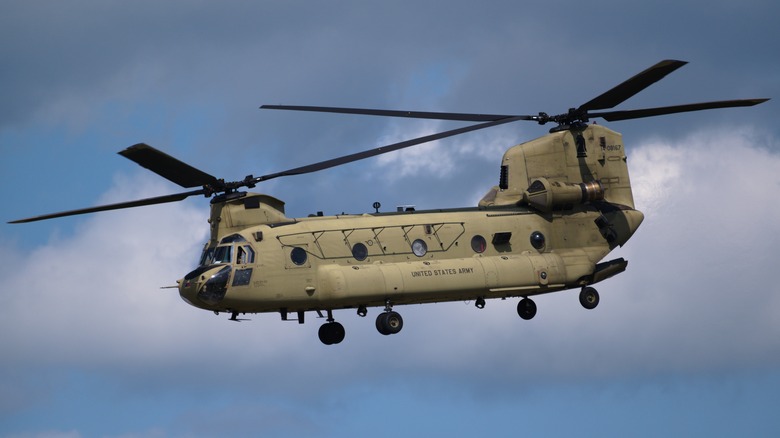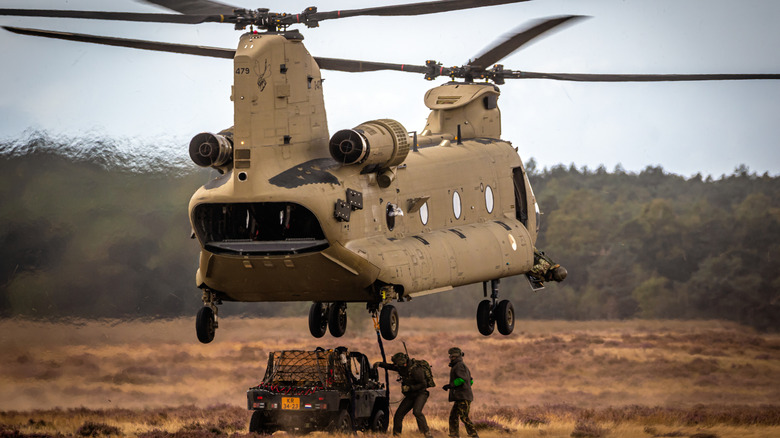Where Are Boeing's Chinook Helicopters Made?
With its long body and dual propeller setup, the Boeing Chinook helicopter is one of the most instantly recognizable choppers of all time. Its unique design and ongoing military and civilian service are the result of years of innovation at Boeing's Ridley Park production facility in Philadelphia, Pennsylvania.
Also known under the military designation of CH-47, the Chinook was first designed in the mid-1950's by the Veritol Corporation to fill the gap left by the aging Sikorsky CH-37 Mojave. Initially dubbed the Vertol Model 107, the new chopper changed names when Boeing purchased Veritol in 1960. Boeing moved forward with production of the Chinook at Ridley Park, with the first chopper lifting off just one year later. Boeing's Philadelphia plant has been the home of the Chinook since then and employs more than 3,500 people.
The Ridley Park facility has evolved with the times to keep the Chinook ahead of the pack and accommodate updates to the chopper. Boeing executed a major renovation project at the plant between 2013 and 2014. The result was a modern and efficient complex that could meet the demands of producing one of the Army's most important aircraft. The Ridley Park facility is also right next to another Boeing manufacturing plant that produces the V-22 Osprey, a tiltrotor aircraft.
The versatile Chinook helicopter continues to evolve
The Boeing Chinook CH-47's two propellers make it a more stable and effective helicopter, and it featured heavily in the U.S. Army's forces during the Vietnam War. While the Chinook has also served in other militaries over the years, the CH-47 is much more than just another military aircraft. It's also been used to aid in search and rescue, as well as various humanitarian efforts.
When it comes to modern military operations, the H-47, a designation that includes various models, represents the top Chinook helicopters. The H-47 can lift heavy cargo to and from areas where other helicopters can't go. Not only can it handle rough terrain, it can also withstand severe wind conditions, as well, with the ability to fly higher and faster than other heavy-lift choppers. The H-47 is also maxed out with the latest high-tech operating systems to handle a variety of challenging situations.
Taking the Chinook program a step further is the Block II, a modern update that serves as the most advanced Chinook to date. The Block II has advanced lift capabilities, improved fuel tanks, and boasts an overall better performance than any Chinook helicopter in service.

